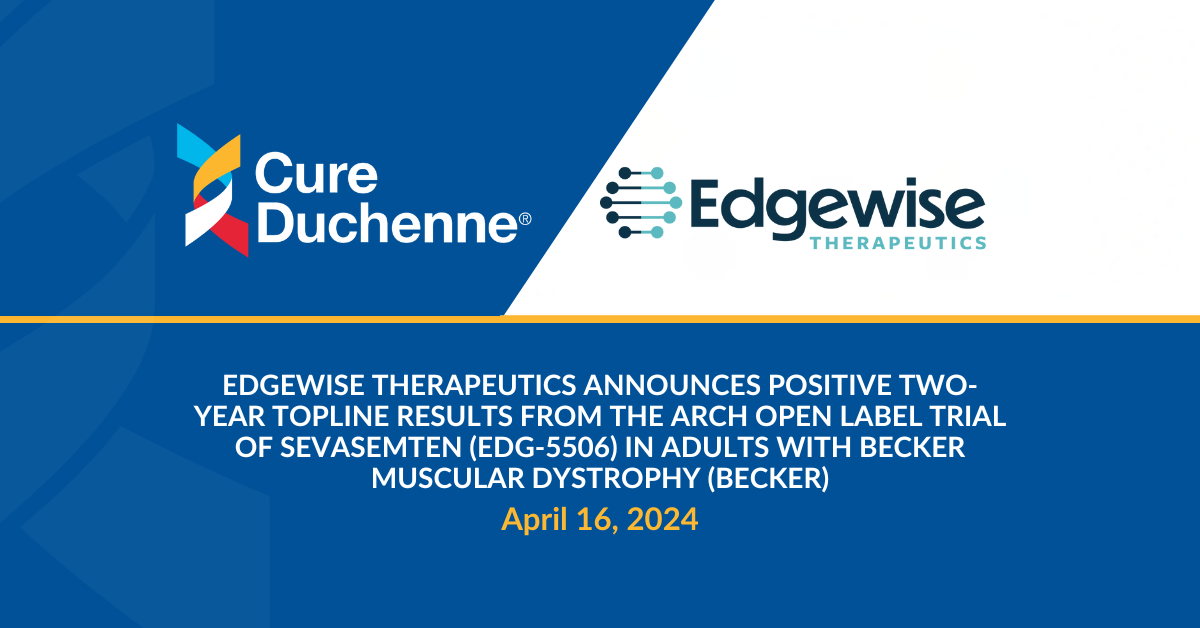Cure Duchenne Supports Duchenne Duplication Mutation Research with Dr. Kevin Flanigan
 Exon duplication mutations have been an area of great interest to CureDuchenne, and last year, CureDuchenne funded research specifically directed toward these mutations in Duchenne. Dr. Kevin Flanigan at Nationwide Children’s Hospital has successfully completed the first phase of his research (please see below).
Exon duplication mutations have been an area of great interest to CureDuchenne, and last year, CureDuchenne funded research specifically directed toward these mutations in Duchenne. Dr. Kevin Flanigan at Nationwide Children’s Hospital has successfully completed the first phase of his research (please see below).
CureDuchenne will continue to fund his work in 2013. The three components of this project are:
1. Expansion of mdx duplication mouse model
Dr. Flanigan and team have successfully generated mice carrying a duplication of exon 2 within the Dmd locus, and they are currently expanding their colony of this novel DMD mouse model. This expansion of the mouse colony is necessary to generate enough animals for meaningful analysis of any experiments.
2. Characterize duplication skipping in human fibroblast lines
Dr. Flanigan has demonstrated successful skipping of many single and double exon duplications in cell lines derived from patients. His group is now pursuing experiments injecting these cells into mdx animals in order to determine the feasibility of using an engraftment model to study the effect of custom AON therapies directed toward duplication mutations.
3. Determine the effectiveness of U7 snRNA-mediated skipping on duplication mutations.
AAV vectors carrying U7snRNA constructs targeting specific exons have been shown to result in efficient exon skipping in animal models. Dr. Flanigan’s group has developed U7-AAV vectors for studies both in cell lines and in the mdxdup2 mouse to be performed within the next year.
Progress Report for Year One of Duplication Mouse Study
Dr. Kevin Flanigan’s group at Nationwide Children’s Hospital has developed a new mouse model for DMD that carries a duplication of exon 2. This is the most common single exon duplication in Duchenne patients. Preliminary studies show that these mice do not make dystrophin, and have significant muscle pathology. Studies now underway will provide detailed information regarding the severity of muscle abnormalities in the mouse, and whether skipping of one copy of the duplicated exon can reliably be achieved. This strategy is important to test since skipping one copy of a duplicated exon would be predicted to result in an entirely normal dystrophin protein.
Dr. Flanigan’s group has also developed immortalized cell lines from patients with duplications in the dystrophin gene. These cell lines will be used as a tool for testing exon skipping in duplication mutations. To date, Dr. Flanigan and team have created 19 duplication cell lines from Duchenne patients and will be expanding the number of cell lines to be studied.
The third aim of this project was to determine the effectiveness of viral vector-mediated exon skipping (using an AAV- U7 snRNA, as opposed to an AON) on duplication mutations. His team has created several U7 vectors that utilize different targeting sequences to induce skipping of exon 2. These viral constructs are undergoing testing in both myoD-transdifferentiated patient fibroblasts and the new mouse line.




